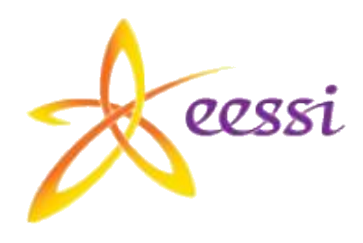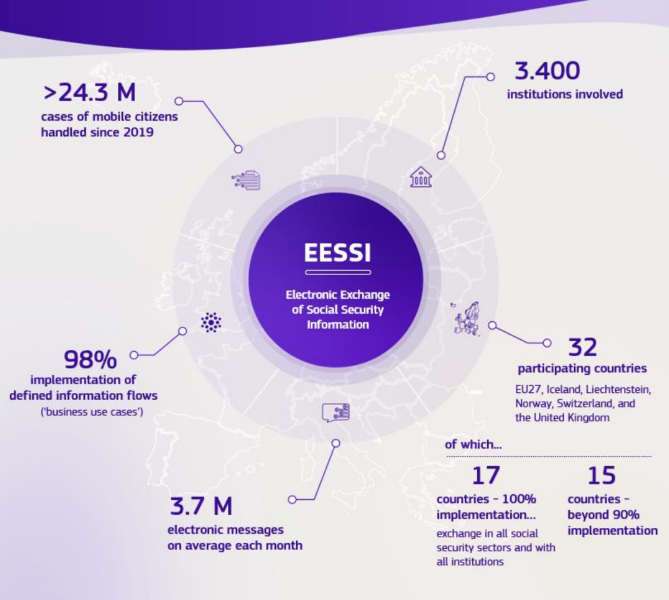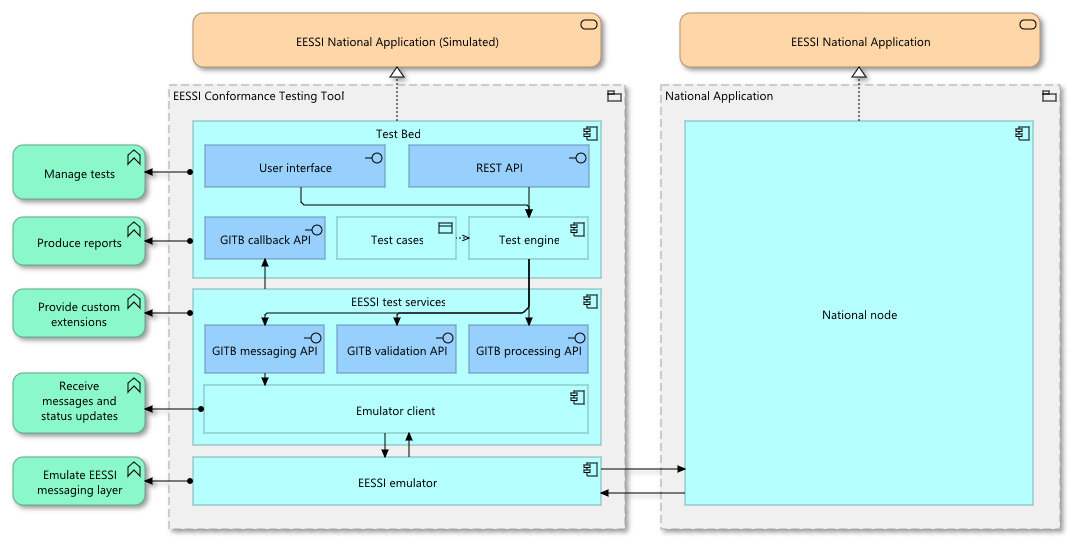
The Interoperability Test Bed (ITB) will be used to support a new decentralised conformance testing process for the Electronic Exchange of Social Security Information system (EESSI).

The Electronic Exchange of Social Security Information system (EESSI) is a trans-European solution connecting electronically National social security institutions for the exchange of social security information. It replaces paper-based exchanges benefiting citizens and businesses by efficiently processing social security benefits; as well as Institutions by enabling higher data completeness and accuracy, combating of fraud and errors, and efficient implementation of social security coordination rules. According to its published May 2024 factsheet, EESSI connected at that point 3400 social security institutions from 32 participating countries.

From a technical perspective, EESSI uses the AS4 protocol applying a multi-hop architecture for different flows, whereby National nodes are interconnected by means of Access Points, facilitated by common directory services offered by a Central Service Node operated by the European Commission’s DG EMPL. On top of this messaging backbone, EESSI defines Business Use Cases (BUCs) involving the exchange of messages containing Structured Electronic Documents (SEDs) between National Institutions. Prior to connecting to the live system, National nodes are expected to test for conformance to EESSI specifications via test environments made available by DG EMPL.
It is on the topic of conformance testing that the EESSI project team reached out to the Test Bed in 2022, with the goal of providing National Institutions with an improved conformance testing approach. This approach foresees a decentralised testing model whereby DG EMPL provides a preconfigured and self-contained conformance testing package, that National implementation teams can use on-premise to validate their node implementations. Moreover, the design is such that allows both the test software and test cases to evolve and be updated after the initial setup. This new testing package will allow National implementations to be tested earlier during their development and will enable higher quality assurance even before carrying out interoperability tests on DG EMPL’s environments.
A proof-of-concept of the new conformance testing solution, was initially developed by the Test Bed team in early 2022 with close collaboration from the EESSI team’s experts. Since this first iteration, the conformance testing implementation has been elaborated by the EESSI project team, extending to cover additional BUCs over several business domains. The result, termed the EESSI Conformance Testing Tool (CT Tool), leverages the Test Bed’s sandbox concept, to deliver a preconfigured testing package that National teams can install locally and begin testing against. The EESSI messaging backbone in this case is replaced by an emulator component that is orchestrated by the test engine through a layer of custom test services.

The new conformance testing package has been made available to participating countries during Q3 2024 to begin testing and to gather feedback. Following this, and assuming a successful piloting phase, the test coverage shall continue to be extended to address further BUCs. The ultimate goal will be to facilitate as much as possible National developments in view of having EESSI in full production operation by all participating countries in May 2025.
More information on EESSI is provided online by DG EMPL, where you can also find the latest published factsheet containing interesting usage statistics. Regarding the Test Bed itself, general details on its services and other use cases can be found in its Joinup space, with its value proposition being a good starting point for newcomers. To receive updates on Test Bed news and releases remember to subscribe to the Test Bed on Joinup, and to follow Interoperable Europe’s updates on X and LinkedIn.
The Interoperability Test Bed is a service provided by the European Commission’s DIGIT, offering conformance testing and validation solutions in support of IT systems’ cross-border interoperability.
Referenced solution


